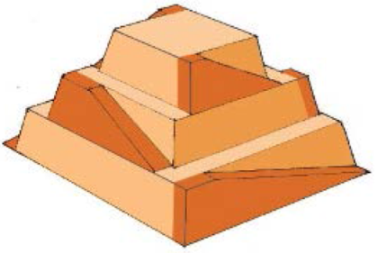Search results
a) Calculate the gravitational potential energy stored in the pyramid, given its center of mass is at one-fourth its height.
b) Only a fraction of the workers lifted blocks; most were involved in support services such as building ramps, bringing food and water, and hauling blocks to the site. Calculate the efficiency of the workers who did the lifting, assuming there were 1000 of them and they consumed food energy at the rate of 300 Kcal/hour.
first we calculate the number of hours worked per year.
then we calculate the number of hours worked in the 20 years.
Then we calculate the energy consumed in 20 years knowing the energy consumed per hour and the total hours worked in 20 years.
The efficiency is the resulting potential energy divided by the consumed energy.
In fluid mechanics, the Rayleigh number (Ra) for a fluid is a dimensionless number associated with buoyancy-driven flow, also known as free convection or ... more
Formula first contributed by:
zfyl
The R-value is a measure of thermal resistance, or ability of heat to transfer from hot ... more
Electrical impedance is the measure of the opposition that a circuit presents to a current when a voltage is applied. The term complex impedance may be ... more
Electrical impedance is the measure of the opposition that a circuit presents to a current when a voltage is applied. The term complex impedance may be ... more
...can't find what you're looking for?
Create a new formula
The awe‐inspiring Great Pyramid of Cheops was built more than 4500 years ago. Its square base, originally 230 m on a side, covered 13.1 acres, and it was 146 m high (H), with a mass of about 7×10^9 kg. (The pyramid’s dimensions are slightly different today due to quarrying and some sagging). Historians estimate that 20,000 workers spent 20 years to construct it, working 12-hour days, 330 days per year.
